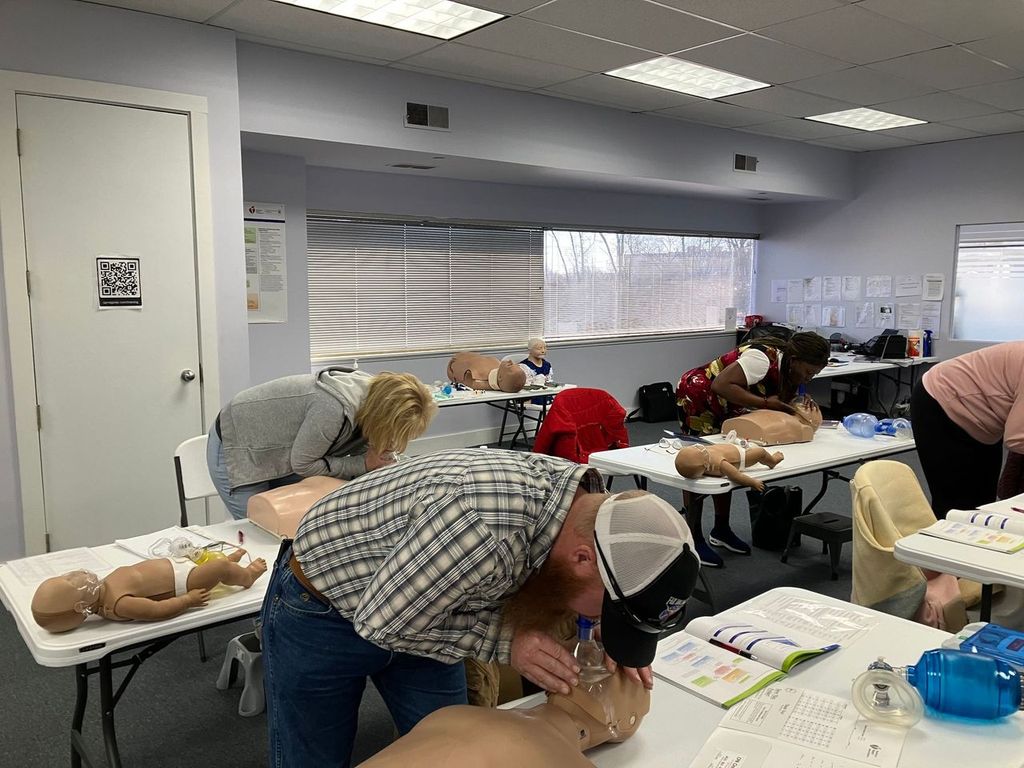I. Introduction
The Good Samaritan Law is a legal principle that protects from liability for those who willingly attempt to help others in emergencies. It aims to encourage bystanders to provide reasonable assistance to individuals in need without fear of being sued or prosecuted for unintentional injuries or damages that may occur during their helpful actions.
The name “Good Samaritan” is derived from a famous parable in the Bible, where a Samaritan man helped a stranger who had been robbed and beaten, while others had passed him by. This story exemplifies the moral and ethical principle of helping those in need, even when it may involve personal risk or inconvenience.
Understanding the Good Samaritan Law is crucial because it addresses a common concern that often deters bystanders from intervening in emergencies: the fear of legal repercussions. By removing this barrier, the law aims to encourage people to act as “good Samaritans” and provide assistance to those in need without hesitation.
II. History and Origins of the Good Samaritan Law
The concept of providing legal protection for those who render aid to others in emergencies has its roots in ancient cultures and religious teachings. However, the modern Good Samaritan Laws trace their origins back to the early 20th century, when several high-profile incidents highlighted the need for such legislation.
One of the earliest and most notable cases was the 1964 incident involving Kitty Genovese, a young woman who was brutally murdered in Queens, New York, while her neighbors reportedly remained passive bystanders. This tragedy sparked public outrage and prompted discussions about the moral and legal obligations of bystanders to intervene in emergencies.
In response, several states began enacting Good Samaritan Laws in the late 1950s and 1960s. The first state to pass such a law was California in 1959, followed by others like Nevada, Minnesota, and Wisconsin in the years that followed. By the mid-1990s, all 50 states in the United States had adopted some form of Good Samaritan legislation.
The spread of these laws was not limited to the United States. Many other countries around the world, recognizing the importance of encouraging bystander assistance, also implemented similar legal protections for good Samaritans in their respective jurisdictions.
III. Key Provisions of the Good Samaritan Law
While the specifics of Good Samaritan Laws vary across different states and countries, they generally share several common key provisions:
Legal protections for those providing reasonable assistance
The core principle of the Good Samaritan Law is to provide legal protection from civil liability (lawsuits) or criminal prosecution for individuals who voluntarily render reasonable assistance to others in an emergency. This protection applies even if their actions unintentionally cause harm or injury to the person they are trying to help.
Requirements for the law’s protection to apply
However, the legal protections afforded by the Good Samaritan Law are not unconditional. Most jurisdictions require certain criteria to be met for the law’s protection to apply, such as:
- The assistance must be provided in good faith and without expectation of compensation.
- The actions taken must be reasonable and intended to help the person in distress.
- The actions should not involve willful or wanton misconduct or gross negligence.
Exceptions and limitations
While the Good Samaritan Law provides legal protection in many cases, some exceptions and limitations vary across jurisdictions. Common exceptions include:
- Situations where the responder is already legally obligated to assist (e.g., on-duty medical professionals).
- Cases involving intoxicated or impaired good Samaritans who may have compromised judgment.
- Instances where the responder abandons the person after initiating assistance.
- Situations involving criminal acts or intentional harm.
It’s important to note that the Good Samaritan Law is not a blanket protection against all legal liability. It primarily aims to encourage bystanders to render reasonable assistance without fear of civil or criminal consequences for unintentional harm caused in good faith efforts to help.
IV. Rationale and Importance
The Good Samaritan Law serves several important purposes and is based on sound rationales:
Encouraging people to help others in emergencies
At its core, the law is designed to encourage bystanders to take action and provide assistance to individuals in emergencies. By removing the fear of legal liability, the law aims to overcome the natural hesitation or reluctance that many people may feel when faced with the decision to intervene.
Numerous studies have shown that the presence of bystanders can often inhibit individuals from taking action, a phenomenon known as the “bystander effect.” The Good Samaritan Law seeks to counteract this tendency by providing legal reassurance to those who choose to help.
Removing fear of legal liability as a barrier
One of the primary barriers that prevent bystanders from assisting in emergencies is the fear of potential legal consequences if their actions unintentionally cause harm or injury. The Good Samaritan Law directly addresses this concern by shielding good-faith rescuers from civil liability or criminal prosecution in most cases.
By removing this legal risk, the law aims to empower individuals to act decisively and provide potentially life-saving assistance without hesitation or second-guessing.
Real-life examples of the law’s impact
Numerous real-life examples demonstrate the positive impact of the Good Samaritan Law in encouraging bystander intervention and potentially saving lives. For instance, in 2018, a bystander in Texas performed CPR on an unresponsive individual, ultimately saving their life. The bystander later stated that they were initially hesitant to intervene but felt more confident knowing that the Good Samaritan Law provided legal protection.
Similar stories abound, highlighting how the law has empowered ordinary citizens to take action in emergencies without fear of legal repercussions for unintentional mistakes or harm caused during their efforts to help.
The Good Samaritan Law plays a crucial role in promoting a sense of community responsibility and encouraging individuals to step forward and assist those in need, potentially making a life-or-death difference in emergencies.
V. Variations Across Jurisdictions
While the core principles of the Good Samaritan Law are similar across different states and countries, there are notable variations in how the law is implemented and interpreted in different jurisdictions.
Differences in state/country laws
In the United States, each state has its version of the Good Samaritan Law, leading to slight differences in the specifics of the legislation. For example, some states may provide broader protections or cover a wider range of emergency scenarios compared to others.
Similarly, in other countries, the laws governing good Samaritan actions can vary significantly. Some nations may have more comprehensive or stricter regulations, while others may have more limited legal protections in place.
Specific scenarios covered or excluded
The scope of the scenarios covered by the Good Samaritan Law can also differ across jurisdictions. While most laws focus on emergency medical situations, some jurisdictions may extend the protections to other types of emergencies, such as fires, natural disasters, or accidents.
Conversely, certain scenarios may be explicitly excluded from the law’s coverage. For instance, some states or countries may not extend protections to actions taken during the commission of a crime or to individuals who are grossly negligent or reckless in their attempts to assist.
Levels of legal protection provided
The degree of legal protection afforded by the Good Samaritan Law can also vary. Some jurisdictions may provide broader immunity from civil liability, while others may offer more limited protection or have specific exceptions or conditions attached.
Additionally, the level of protection against criminal prosecution can differ, with some laws offering complete immunity from criminal charges, while others may only provide an affirmative defense or mitigating factor in legal proceedings.
These variations across jurisdictions underscore the importance of understanding the specific provisions and nuances of the Good Samaritan Law in one’s respective state or country. It is always advisable to consult legal professionals or relevant authorities for clarification on the scope and limitations of the law in a particular location.
VII. Conclusion
The Good Samaritan Law serves as a powerful legal and moral framework that encourages individuals to take action and help those in need during emergencies. By providing legal protections against civil liability and criminal prosecution, the law aims to overcome the natural hesitation or fear that often prevents bystanders from intervening.
While the specifics of the law may vary across different jurisdictions, its underlying principles remain consistent: to promote a sense of community responsibility and empower ordinary citizens to act decisively when faced with emergencies, potentially making a life-or-death difference.
Despite criticisms and debates surrounding the scope and limitations of the Good Samaritan Law, its positive impact on encouraging bystander intervention and potentially saving lives cannot be overstated. Real-life examples have demonstrated how the law has given individuals the confidence to step forward and provide assistance without fear of legal repercussions for unintentional mistakes or harm caused during their efforts to help.
However, it is important to recognize that the Good Samaritan Law is not a substitute for proper training and preparedness in emergency response. While the law provides legal protections, having the knowledge and skills to respond effectively in crises can make a significant difference in the outcome.
Enroll in CPR Certification in Indianapolis
By gaining these valuable skills, you not only equip yourself to potentially save lives but also demonstrate a commitment to responsible emergency response, which can further strengthen the legal protections offered by the Good Samaritan Law.
So, don’t let fear or hesitation prevent you from taking action in an emergency. Empower yourself with CPR certification in Indianapolis and become a true good Samaritan, ready to make a difference when it matters most.





